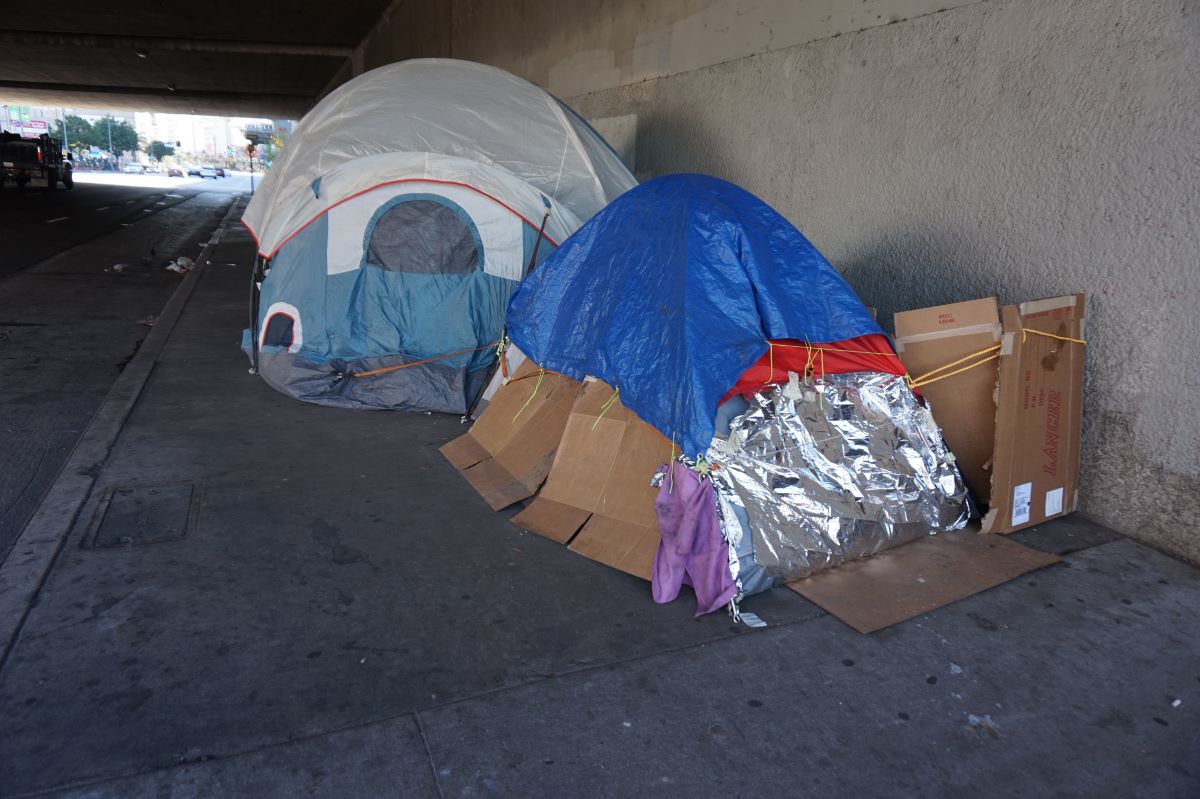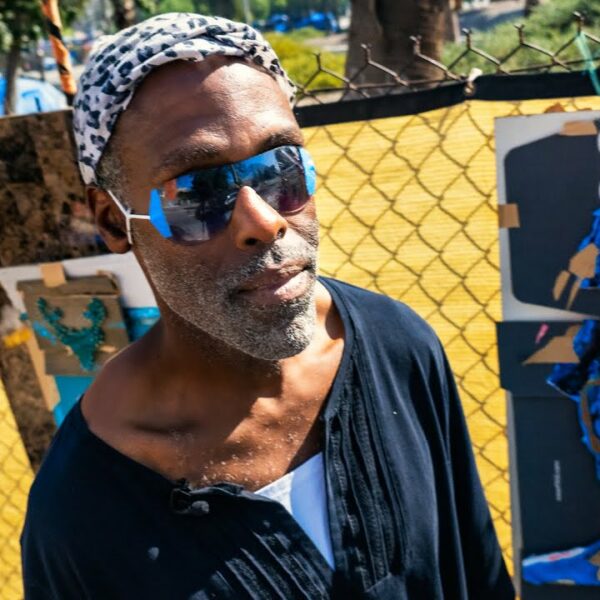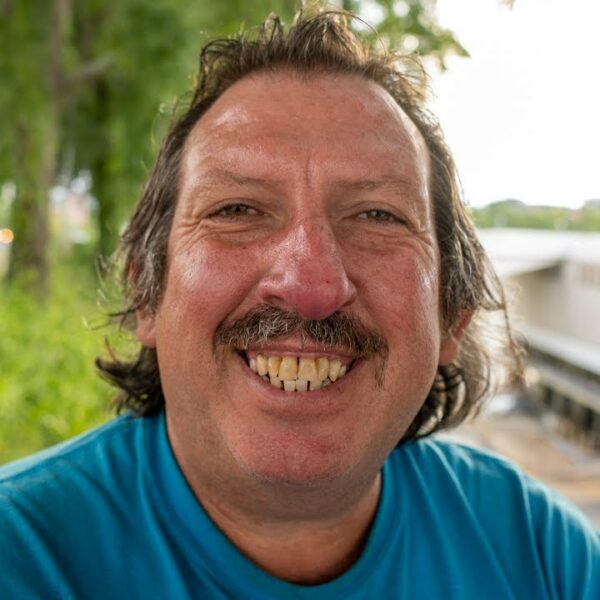CDC Doubles Down on Guidance: No Sweeps, Allow Homeless People to Stay Where They Are
While many believed the COVID-19 pandemic was winding down this past summer, it has once again revved up with the Omicron variant.
Homeless people have always disproportionately felt the effects of the pandemic in two key ways. First, they’re more likely to be hospitalized and die from the disease. Second, life is a lot harder as a homeless person, given things like decreased capacity at shelters.
These issues are very much still present for homeless people. As a result, the US Interagency Council on Homelessness, in partnership with the CDC, HHS, HUD, and VA, has released new guidance for those serving homeless people during this Omicron surge.
But following them requires some changes. With the low case numbers over the summer and feelings of security, thanks to the vaccine, came a letting down of our guard. We relaxed the precautions that we now must put back up in order to keep everyone, especially vulnerable populations like homeless people, safe. No one wants to go back to masking and social distancing, especially not those statistically less likely to get sick, like housed service providers. But that’s precisely what we must do.
Unfortunately, another pre-pandemic “normalcy” has returned: a rise in homeless camp sweeps. During the pandemic’s earliest days, sweeps slowed down thanks to CDC guidelines. However, sweeps ramped up again throughout 2021, as places like Portland and Denver show.
With illusions of normalcy so firmly in place, cities will likely continue sweeps. This is despite the fact sweeps pose a critical health and safety threat to homeless people – not to mention sweeps do nothing to help homeless people. They are political stunts designed to give the illusion of cleaning up homelessness.
The new guidelines from the CDC and HUD are summarized through the following points:
10-Day Quarantine Period
Homeless people should be given appropriate space and time to quarantine. This new guidance outlines the funding sources local governments can tap into to provide temporary housing, such as motel rooms. It emphasizes that just like at the start of the pandemic, governments should make sure people who are either positive for COVID-19, have been exposed to it, or are at high-risk are sheltered.
The 10-day quarantine period is also still recommended for people experiencing homelessness, regardless of vaccination status. This differs from guidance for housed people, for whom the quarantine period has been reduced to 5 days if asymptomatic.
Accessible Testing
Testing should be easily accessible for homeless people. Accessible testing has been a challenge for everyone. However, it’s crucial to make sure homeless people get tested when they need to. They’re likely to have frequent contact with many people at shelters and other public spaces. However, the guidance clearly states that services such as shelters should not require a negative test to enter.
Access to Vaccinations
Vaccinations should be encouraged. Right now, vaccination rates among homeless people are low. Rates are difficult to assess accurately, but it’s estimated between 18 and 44 percent of homeless people are fully vaccinated against COVID-19. This new guidance states that local governments should push vaccinations. It also encourages incentive programs in communities where there’s vaccine hesitancy.
Staff and volunteers should be vaccinated as well. Again, vaccinations should not be required in order to receive help from homeless services.
Masking, Social Distancing, and Cleaning Are Still Important
Ordinary measures taken to prevent the spread of COVID-19 should continue. Given the relatively low summer rates, many prevention techniques like masking and standing six feet apart fell to the wayside. These guidelines reaffirm the importance of masking, distancing, cleaning, and ventilation. They should still happen in shelters, other indoor service agencies, and while performing outreach.
Stop Sweeps
People who are homeless should not be displaced. This includes people who are sleeping rough or staying in an encampment. In a consistent message from the CDC, which unfortunately runs counter to the actions being taken by many local governments, “cleanings,” or sweeps, should not be happening. Homeless people staying in encampments or sleeping unsheltered should be allowed to stay where they are.
Sweeps are harmful for many reasons. They’re traumatic, dehumanizing, and cause homeless people to have to start from the ground up. And these are just the reasons they were terrible before the pandemic. Now, sweeps interrupt peoples’ ability to quarantine and distance. Shelters are high-risk for catching COVID. While getting someone out of a tent and into a shelter might seem like a good thing, it’s actually much more complicated than that.
We Must Re-Commit to Keeping People Safe
This updated service provider guidance was necessary. Omicron poses a new challenge–a greater disparity between the low- and high-risk. It produces milder symptoms than previous variants, but only for people who’ve been vaccinated, had COVID-19 before, or were low-risk to begin with. This means less motivation to mask up and distance.
For people with pre-existing health conditions, the elderly, and homeless people, Omicron is absolutely still deadly.
We still need to do what we can to protect vulnerable people. It may be difficult, costly, or after two long years of the pandemic, exhausting. But if we genuinely care about homeless people, our fellow humans, we must follow the guidelines just as diligently as we did at the start of the pandemic. It’s probable that for them, nothing has changed, or things have become even worse.
Some governments have taken steps to prioritize and enforce stricter COVID-19 precautions. You can, and should, reach out to your lawmakers to tell them how important it is that policies exist and are followed. In times like these, homeless people should not still live in fear of sweeps and service providers who put them at risk.













